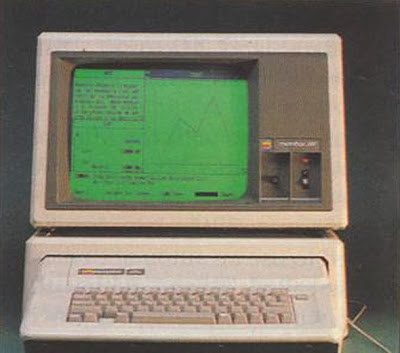Early Beginnings
The premechanical age is the earliest age of
information technology. It can be defined as the time between 3000B.C. and
1450A.D. When humans first started communicating they would try to use language
or simple picture drawings known as petroglyths which were usually carved in
rock. Early alphabets were developed such as the Phoenician alphabet.
As alphabets became more popular and more
people were writing information down, pens and paper began to be developed. It
started off as just marks in wet clay, but later paper was created out of
papyrus plant. The most popular kind of paper made was probably by the Chinese
who made paper from rags.
Now that people were writing a lot of
information down they needed ways to keep it all in permanent storage. This is
where the first books and libraries are developed. You’ve probably heard of
Egyptian scrolls which were popular ways of writing down information to save.
Some groups of people were actually binding paper together into a book-like
form.
The mechanical age can be
defined as the time between 1450 and 1840. There were lots of different
machines created during this era. Technologies like the slide rule were
invented. Blaise Pascal invented the Pascaline which was a very popular
mechanical computer. Charles Babbage developed the difference engine which
tabulated polynomial equations using the method of finite differences.
The electromechanical age can be defined as the time
between 1840 and 1940. These are the beginnings of telecommunication. The
telegraph was created in the early 1800s. Morse code was created by Samuel
Morse in 1835. The telephone (one of the most popular forms of communication
ever) was created by Alexander Graham Bell in 1876. The first radio developed
by Guglielmo Marconi in 1894. All of these were extremely crucial emerging
technologies that led to big advances in the information technology field.
Developmental
Timeline
In 1939, both David Packard and Bill Hewlett found
Hewlett Packard in a California
In 1943, this is when Project Whirlwind begins. The
U.S navy contacts the Massachusetts Institute of Technology (MTI) to build a
flight stimulator to train bomber crews. The team built a large analogue
computer. After designers saw a demonstration of the ENIAC computer, they
decided on building a digital computer.
In 1948, IBM´s Selective Sequence Electronic
Calculator computed scientific data in public display near the company’s Manhattan
The first
commercially produced computer was built by the Engineering Research
Association in 1950, it was called the ERA 1101. The company’s first costumer
was the US
In 1971 the first
email was sent. It was sent by Ray Tomlinson by accident. Tomlinson is credited
on the one to decide on the ‘@’ sign.
In 1988, Robert Morris´ made the first
computer virus, worm flooded the ARPANET.
The 23-year-old Morris, the son of a computer security
expert for the National Security Agency, sent a non-destructive worm through the Internet, causing problems for
about 6,000 of the 60,000 hosts linked to the network.
In 1990, the World Wide Web was born when Tim
Berners-Lee, a researcher at CERN, developed Hypertext Mark-up Language. HTML,
as it is commonly known, allowed the Internet to expand into the World Wide
Web, using specifications he developed such as URL (Uniform Resource Locator) and HTTP (Hypertext Transfer Protocol).
In 2004 Facebook was born.
Facebook is a social networking service and website launched in February 2004,
operated and privately owned by Facebook Inc. Facebook was founded by Mark Zuckerberg with his college
roommates and fellow computer science students Eduardo Saverin, Dustin
Moskovitz and Chris Hughes.
An
Inspirational Person – Mark Zuckerberg
Early life:
Mark Elliot Zuckerberg was born on May
14, 1984, in White
Plains , New York Phillips
Exeter Academy ,
an exclusive preparatory school in New
Hampshire
There he showed talent in fencing,
becoming the captain of the school's team. He also excelled in literature,
earning a diploma in classics. Yet Zuckerberg remained fascinated by computers,
and continued to work on developing new programs. While still in high school,
he created an early version of the music software Pandora, which he called
Synapse. Several companies—including AOL and Microsoft—expressed an interest in
buying the software, and hiring the teenager before graduation
College life:
After graduating from Exeter
in 2002, Zuckerberg enrolled at Harvard University
Based on the buzz of his previous
projects, three of his fellow students—Divya Narendra, and twins Cameron and
Tyler Winklevoss—sought him out to work on an idea for a social networking site
they called Harvard Connection. Zuckerberg and his friends created a site that allowed users to
create their own profiles, upload photos, and communicate with other users. The group ran
the site—first called The Facebook—out of a dorm room at Harvard until June
2004. After his sophomore year, Zuckerberg dropped out of college to devote
himself to Facebook full time, moving the company to Palo Alto , California
The Rise of Facebook:
Zuckerberg’s company then granted access
to other colleges, high school and international schools, pushing the site's
membership to more than 5.5 million users by December 2005. The site then began
attracting the interest of other companies, who wanted to advertise with the
popular social hub. Not wanting to sell out, Zuckerberg turned down offers from
companies such as Yahoo! and MTV Networks. Instead, he focused on expanding the
site, opening up his project to outside developers and adding more features.











